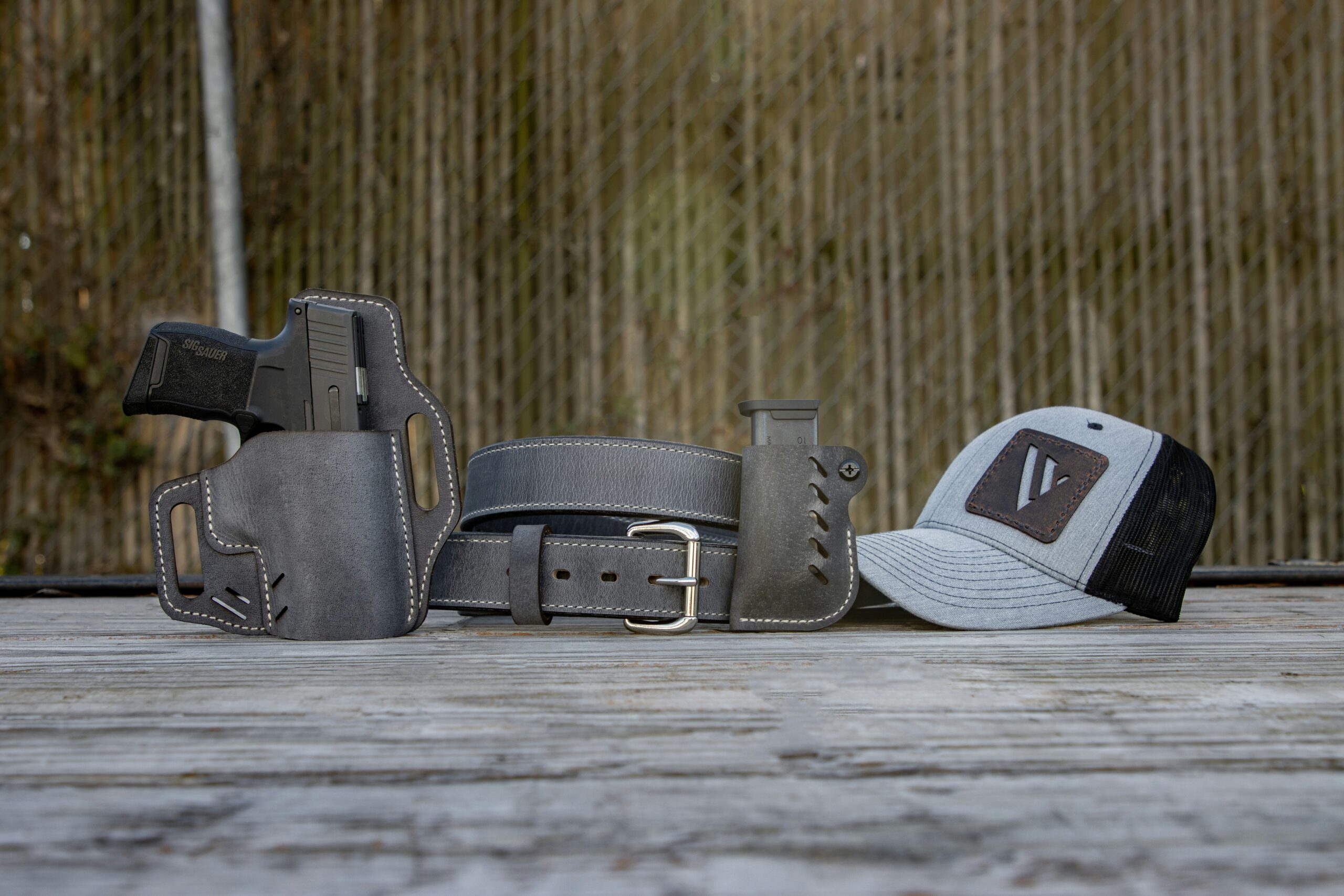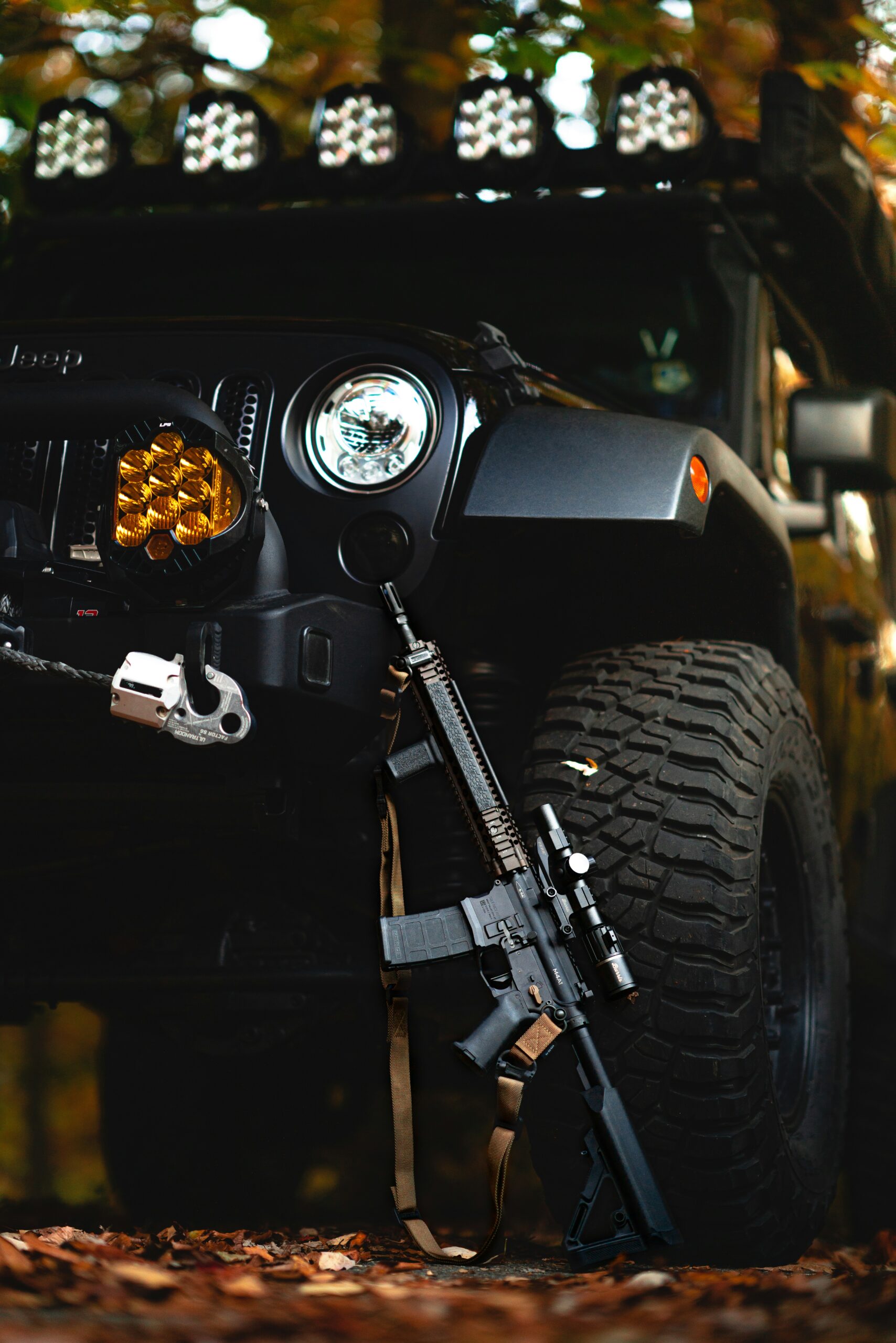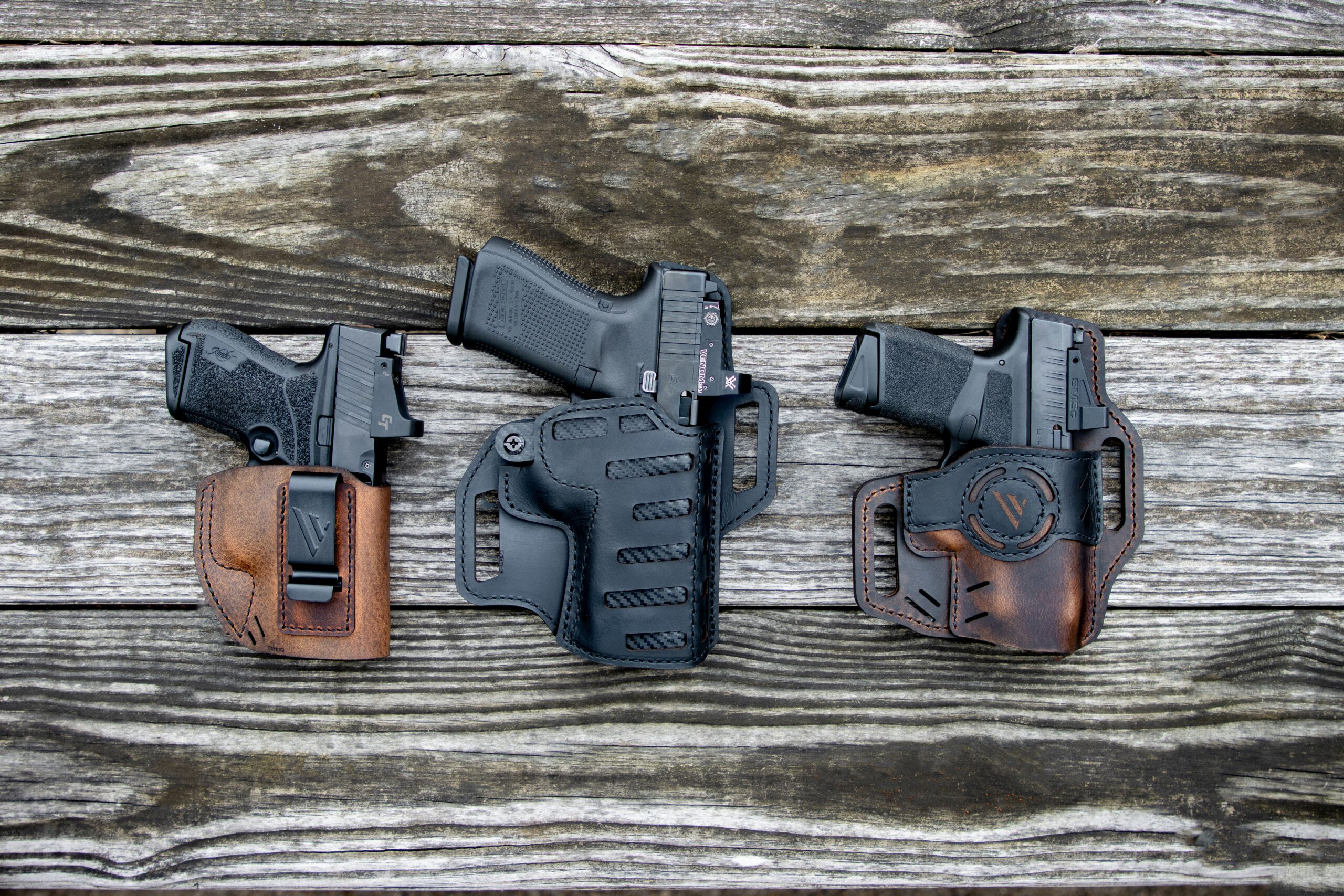Have you ever wondered if it’s possible to use a rifle scope on a revolver? Well, the answer might surprise you. In this article, we’ll explore the compatibility of these two firearm accessories and whether or not it’s feasible to mount a rifle scope on a revolver. So, if you’re curious about expanding the capabilities of your trusty revolver, stick around and find out if this combination is a match made in shooting heaven or if it’s simply an impractical idea.

Understanding the Basics
Defining Rifle Scope
A rifle scope is a magnifying device that is mounted on a rifle to enhance the shooter’s accuracy and precision by allowing them to see the target more clearly. It consists of a series of lenses that magnify the image, providing a closer view of the target. The scopes often have adjustable settings to change the level of magnification and field of view.
Defining a Revolver
A revolver, on the other hand, is a type of handgun that features a rotating cylinder containing multiple chambers, each capable of holding a single round of ammunition. When the trigger is pulled, the cylinder rotates, aligning a new chamber with the barrel, thus allowing the firearm to be fired multiple times without the need for manual reloading.
Understanding the Function of Scopes
The primary function of a scope on a rifle is to aid in target acquisition and enhance accuracy. It provides the shooter with a magnified image of the target, allowing for better visibility and precise aiming. Additionally, scopes often have reticles, which are markings or patterns in the scope’s field of view that provide the shooter with reference points for targeting.
Physical Compatibility of Rifle Scopes and Revolvers
Size and Dimension
One of the key factors to consider when determining the compatibility of a rifle scope with a revolver is the size and dimension of both the scope and the firearm. Revolvers are generally compact and have shorter barrels compared to rifles. Therefore, the length and bulkiness of some rifle scopes may not fit well on a revolver without causing balance and handling issues.
Weight Consideration
Another important aspect to take into account is the weight of the rifle scope. The weight of the scope should be balanced with the weight of the revolver to ensure comfortable handling and minimize strain on the shooter. It is essential to avoid adding excessive weight to the firearm, as it may negatively impact your ability to shoot accurately and quickly.
Mounting Possibilities
The mounting options available for a revolver differ from those suitable for rifles. Revolvers typically require specialized mounting systems designed specifically for handguns. These mounts often attach to the revolver’s frame or barrel, providing a secure platform for the scope. It is crucial to ensure that the mounting system you choose is compatible with both the revolver and the scope.
Features of a Rifle Scope
Magnification and Field of View
The magnification level of a rifle scope determines how much larger the target will appear. Higher magnification is beneficial for long-distance shooting and precise target identification, but it can make it more challenging to acquire targets quickly at close range. The field of view, on the other hand, is the area visible through the scope at a given magnification. A wider field of view allows for better situational awareness and faster target acquisition.
Objective Lens Diameter
The objective lens is the front lens of the rifle scope, and its diameter determines the amount of light that can enter the scope. A larger objective lens diameter allows more light to reach your eye, resulting in a brighter image. However, larger objective lenses can increase the overall size and weight of the scope, which may not be suitable for revolver applications.
Reticle Type
The reticle, also known as the crosshair, is the pattern or marking displayed in the scope’s field of view. It assists the shooter in aiming accurately at the target. There are various types of reticles available, such as duplex, mil-dot, and BDC (Bullet Drop Compensator). The choice of reticle type depends on personal preference, shooting conditions, and the intended use of the revolver.
Impact on Revolver Usage
Effect on Balance and Handling
Attaching a rifle scope to a revolver can significantly impact its balance and handling. The extra weight and length of the scope might shift the revolver’s center of gravity, making it feel less comfortable and maneuverable in your hands. It’s essential to find a balance between the added benefits of a scope and maintaining the revolver’s original handling characteristics.
Impact on Sighting and Accuracy
Using a rifle scope on a revolver can enhance the shooter’s ability to aim accurately and improve sighting capabilities. The magnification and enhanced target visibility offered by the scope can help compensate for the revolver’s shorter sight radius. However, it is crucial to practice and adjust to the new sighting system to ensure optimal accuracy and precision.
Influence on Shooting Range
The addition of a rifle scope to a revolver can extend the effective shooting range. The increased magnification allows for more precise target identification and engagement at longer distances. With proper training and understanding of the scope’s capabilities and limitations, the shooter can confidently engage targets beyond the typical range of a revolver without compromising accuracy.

Common Scopes for Revolvers
Handgun Scopes
Handgun scopes are specifically designed for use on pistols and revolvers. They are often compact and lightweight to maintain proper balance and maneuverability. Handgun scopes typically have lower magnification levels and wider field of view compared to rifle scopes. These features make them suitable for close to medium-range engagements while providing quick target acquisition.
Red Dot Sights
Red dot sights use a projected illuminated dot as the aiming reticle. They are popular among shooters using handguns and revolvers for their simplicity and ease of use. Red dot sights are parallax-free, allowing the shooter to maintain accuracy while rapidly acquiring targets. They excel in close-range engagements but may not be as effective for longer-range precision shooting.
Holographic Sights
Holographic sights are similar to red dot sights but use a more complex reticle projection system. They offer increased accuracy and precision due to their unlimited eye relief and ease of target acquisition. Holographic sights are highly versatile and can be used effectively for both close-quarters and longer-range shooting with the appropriate reticle and adjustment settings.
Choosing the Right Scope for Revolvers
Your Purpose
Before selecting a scope for your revolver, consider the intended purpose of the firearm. Are you planning to use it primarily for target shooting, hunting, or personal defense? Different purposes may require different features in a scope, such as magnification levels, reticle types, and durability.
Performance Specs
Pay attention to the performance specifications of the scopes you are considering. Look for features like clear optics, reliable adjustments, and rugged construction to ensure the scope can withstand the recoil and demands of revolver shooting. Consider the specific shooting conditions you will encounter and choose a scope that can withstand those challenges.
Price and Quality
Set a budget and find a scope that offers good value for the price. Consider the quality and reputation of the manufacturer, warranty coverage, and customer reviews. While higher-priced scopes usually offer better performance and durability, there are budget-friendly options available that can still meet your needs.

Installation Process
Tools Needed
When installing a rifle scope on a revolver, you will need specific tools to ensure a proper and secure fit. These tools may include a set of mount rings or a specialized handgun mount, torque wrench, screwdrivers, and any required mounting hardware provided with the scope or mount.
Step-by-step Procedure
- Ensure that the revolver is unloaded and follow all safety precautions.
- Choose the appropriate mounting system for your revolver, based on the intended scope and manufacturer specifications.
- If using a mount, attach it to the revolver according to the manufacturer’s instructions, aligning it properly with the barrel and frame.
- Install the mount rings onto the mount or directly onto the revolver’s frame or barrel if using a ring mount system.
- Place the scope onto the rings, ensuring that it is centered and aligned with the firearm’s bore.
- Securely tighten the screws on the mount rings or ring mount, following the recommended torque specifications provided by the manufacturer. Be careful not to over tighten and risk damaging the scope or mount.
- Double-check the alignment and tighten any remaining screws or adjustments as necessary.
- Perform a thorough visual inspection to ensure that the scope is securely mounted and aligned properly with the revolver.
Safety Considerations
Safety should always be the top priority when handling firearms and installing accessories. Ensure the revolver is unloaded before beginning the installation process. Follow all manufacturer guidelines and recommendations for proper installation to ensure a secure fit. Regularly inspect the mounting hardware and scope for any signs of wear or loosening to prevent accidents or malfunctions during use.
Practical Application and Real-Life Examples
Hunting with Scope-Equipped Revolvers
Using a scope-equipped revolver for hunting can provide several advantages. The increased magnification and accuracy offered by the scope allow for more precise shot placement, especially at longer distances. Hunters can effectively engage targets such as small game or varmints with better visibility and target identification. Additionally, the use of a scope can compensate for the revolver’s limited range, extending hunting opportunities.
Competitive Shooting
Competitive shooting sports often include revolver divisions, and adding a rifle scope to a revolver can elevate your performance. The enhanced target visibility and improved accuracy offered by the scope can give you a competitive edge. Whether it’s precision shooting at steel targets or engaging multiple targets in a timed event, a scope-equipped revolver can help improve your scores and enhance your overall shooting experience.
Personal Defense
While less common than using a scope on a rifle for self-defense purposes, a scope-equipped revolver can still be a viable option for personal defense in certain scenarios. The increased accuracy and target acquisition capabilities provided by the scope can be advantageous when engaging threats from a distance. However, it is essential to consider the potential drawbacks and limitations, such as the slower target acquisition compared to iron sights or red dot sights.
Potential Drawbacks and Concerns
Issues with Recoil and Durability
One of the primary concerns when using a rifle scope on a revolver is the recoil generated by the firearm. Revolvers are known for their powerful recoil, and the repeated force can put significant stress on the scope and mount. It is crucial to choose a scope that can withstand the recoil forces and has a robust construction to prevent potential damage or loss of zero.
Difficulties in Quick Target Acquisition
Compared to red dot sights or open iron sights, using a scope on a revolver requires additional time to acquire targets. The process of bringing the scope’s magnified image into focus and aligning the reticle with the target can be slower, especially in dynamic or close-quarters situations. This can be a significant disadvantage in scenarios where speed and quick target acquisition are vital.
Potential Legal Restrictions
Before mounting a scope on a revolver, check your local laws and regulations. Some jurisdictions have restrictions on the use of certain optical devices or attachments on handguns. It is essential to comply with any legal requirements to avoid legal consequences.
Conclusion on Using a Rifle Scope on a Revolver
Weighing the Pros and Cons
Using a rifle scope on a revolver can have both advantages and disadvantages. The added accuracy, target visibility, and extended shooting range can be beneficial for certain applications such as hunting or competitive shooting. However, the impact on balance and handling, potential difficulties with target acquisition, and legal restrictions should also be carefully considered.
Personal Preference
Ultimately, the decision to use a scope on a revolver is a matter of personal preference. Consider your intended use for the firearm, shooting environment, and shooting style. If the benefits of a scope outweigh the drawbacks for your specific needs, it may be worth exploring this option.
Overall Practical Feasibility
While it is technically possible to use a rifle scope on a revolver, the practical feasibility may vary depending on factors such as the size, weight, and intended purpose of both the revolver and the scope. It is essential to carefully assess the physical compatibility, performance specifications, and installation requirements before proceeding. With proper research, selection, and installation, a scope-equipped revolver can offer enhanced shooting capabilities and a unique shooting experience.

